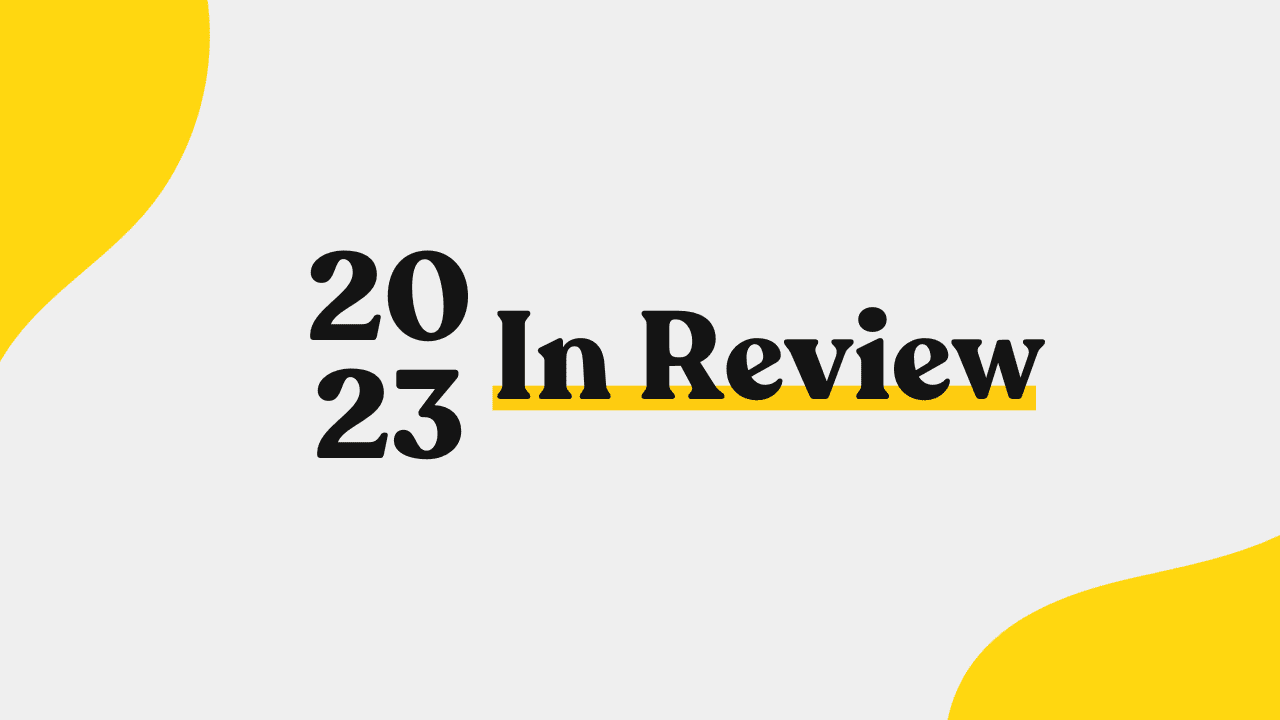
- SEO Strategy, Search Engine Optimisation, SEO
Recent articles
our mailing list
Master SEO: On-Page vs Off-Page Guide

Welcome to the world of SEO!
Search engine optimisation, or SEO, is the practice of optimising your site’s content and structure to increase its visibility on search engines like Google or Bing.
With billions of websites on the internet, standing out from the crowd can be a challenge.
That’s where a comprehensive SEO strategy comes in, helping you land on the coveted first page and attract potential leads to your site.
To achieve this, you need to master the art of both on-page and off-page optimisation techniques – lucky for you, we’ll explore these in depth later in this post!
Why SEO Is So Important
By optimising your website, you can increase your visibility, reach, and ultimately, drive traffic to your website.
In today’s digital world, having a website is not enough to get noticed.
To stand out from the crowd, you need a comprehensive SEO strategy that includes keyword research, content optimisation, link building; both on-page and off page optimisation.
But, before we get into that- lets start with some definitions.
On-page vs Off-Page Optimisation?
On-page and off-page optimisation are two crucial aspects of SEO that work together to increase your website’s visibility on search engines.
First off, On-page optimisation.
Think of it as referring to SEO factors and techniques focused on optimising aspects of your website that are under your control.
This includes optimising your website’s content, structure, and meta tags to make it more search engine friendly.
Off-page optimisation, on the other hand, focuses on building links and social signals to increase your website’s authority and credibility.
Essentially it works with SEO factors and strategies focused on promoting your site or brand around the web.
A holistic SEO strategy is one that incorporates both on-page and off-page optimisation techniques, to provide a comprehensive boost to a page’s traffic, authority and rank.
Crafting A Comprehensive SEO Strategy
Identify Your Audience
The first step in creating an effective SEO strategy is to identify your target audience.
Who are the people you want to reach? What are their interests, behaviours, and demographics?
Understanding your target audience means you will be on the right track to create content that resonates with them and meets their needs.
We’ll explain why this is so important further on (hint: Google rewards quality content with a higher rank).
Ultimately understanding your customers is critical for any business looking to succeed.
The concept of “thinking like your customer” is a powerful tool that allows you to do just that.
This blog post dives into actionable steps to identify and understand your target audience.
Determining Keywords And Phrases To Target
Once you’ve done your due diligence and you know who you are targeting, the next step is to determine the keywords and phrases that they are searching for.
These are the words and phrases that people type into search engines when they’re looking for something.
By targeting these keywords, you can increase your website’s visibility on search engines and attract more traffic to your site.
Keyword research is a critical aspect of SEO, and it’s important to choose the right keywords that have high search volume and low competition.
Why, you may ask?
Because SEO should always be strategic.
High search volume means that a large number of people are searching for that keyword, while low competition means that there are fewer websites targeting that keyword.
By targeting keywords with high search volume and low competition, you have a better chance of ranking higher on search engines.
Don’t worry, more on keywords optimisation to come!
On-Page Optimisation
Keyword research and optimisation
Keyword research and optimisation is a critical part of on-page optimisation.
By researching and using the right keywords on your website, you can improve your website’s visibility on search engines and attract more targeted traffic.
Keyword optimisation involves incorporating keywords in your website’s content, headings, and meta tags.
But it’s not just about stuffing your website with keywords – it’s about using the right keywords in a natural and meaningful way to provide value to your users, that’s what Google values.
To begin your keyword research, you can start with seed keywords – broad terms related to your niche or industry.
For example, if you’re a fitness coach, some seed keywords could be “weight loss,” “fitness tips,” or “workout routines.”
Once you have your seed keywords, you can use keyword research tools like Google Keyword Planner, SEMrush, or Ahrefs to generate a list of related keywords and their search volume.
If any of these tools seem too intimidating then here’s a hot tip:
AI is your friend!
ChatGPT is an AI-powered language model that can generate relevant and unique content ideas or related keywords based on your niche and target audience.
It’s 2023, if you’re not leveraging AI then you’re falling behind!
It’s also important to focus on long-tail keywords – more specific phrases that have a lower search volume but are more targeted to your niche or industry.
For example, instead of targeting the broad keyword “fitness tips,” you could target the long-tail keyword “healthy meal plans for weight loss.”
Long-tail keywords have a higher chance of conversion because they’re more specific and indicate that the searcher is looking for something specific.
(You can ask ChatGPT for these too!)
Optimise Meta Tags, Titles, And Descriptions
Meta tags, titles, and descriptions are the essential elements of on-page optimisation.
These appear in the search engine results pages (SERPs) and give users a brief overview of your website’s content.
Additionally, Google relies on these to know if your content is relevant to the search query or not.
You need to make sure the keywords you are entering into the meta tags, titles, and descriptions are not only relevant but provide a compelling and accurate description of your content.
Use Header Tags And Incorporate Internal Links
Using header tags (H1, H2, H3, etc.) and incorporating internal links is another essential aspect of on-page optimisation.
Header tags provide structure and hierarchy to your content, making it easier for users to navigate and understand. (By now we’re sure you can see that user experience is a major theme of SEO).
Incorporating internal links (links that point to other pages on your website) can also improve your website’s usability and user experience.
This helps both your website visitors and the search engines find related content on your site – that means they can index all relevant content.
Optimise Website Speed And Mobile-Friendliness
Website speed and mobile-friendliness are critical on-page factors.
As Google prioritises a seamless web experience, your website speed can affect your website’s ranking and ultimately, user experience.
Optimising your website speed involves reducing the file size of your images, enabling browser caching, and minimising HTTP requests.
It’s best practice to do routine website speed checks every so often, sites like gtmetrix.com/ make this simple to do.
The mobile-friendliness of your site is another factor that must be considered.
In 2023, 60% of all web traffic is coming through mobile phones (source: statcounter)
If your site provides a poor user experience or user interface on mobile then you’re falling behind your competition.
Optimising your website for mobile involves using responsive design, ensuring that your website is easily navigable on smaller screens, and optimising your website’s loading time on mobile devices.
Create Quality Content
Lastly but definitely not least – creating quality content is key to achieving SEO.
And if you want to level up your content game, you better get in on the E-E-A-T guidelines by Google.
E- E-A-T stands for experience, expertise, authoritativeness, and trustworthiness, and it’s a set of benchmarks that Google uses to evaluate the quality of content.
So, what does it take to meet these standards?
For starters, the experience factor considers the extent to which the creator has first hand experience on the topic.
Additionally, you need to be an expert in the topic you’re writing about, or at least have some solid research to back up your claims.
You also need to be authoritative, meaning you have to be the one in charge here, with credentials, awards, and some serious social proof to your name.
And lastly, but certainly not least, you need to be trustworthy, so your readers can count on you to provide reliable information that they can rely on.
So, keep E-E-A-T in mind as the gold standard for creating content that Google values.
Off-Page Optimisation
Backlinks and link building
Backlinks are like little bridges that connect your website to other sites across the internet.
The more links you have pointing to your site, the higher your ranking in search engine results.
But not all links are created equal.
Quality links from high-authority sites are worth their weight in gold, while spammy links can actually hurt your ranking.
Let’s say you run a food blog, and you’ve just written an article about the best vegan pizza in town.
If a popular food blogger links to your article from their own blog, that’s a backlink.
It’s like a vote of confidence that tells Google your content is high-quality and authoritative.
To build more links like this, you might reach out to other food bloggers and ask if they’d be interested in sharing your article with their audience.
You could also look for opportunities to guest post on other food blogs and include links back to your site in your articles.
Social Media Presence And Engagement
In 2023 we’re sure you understand the importance of a strong social media presence.
And guess what? It’s important for SEO too.
With a killer social media presence and engaging with your audience, you can drive traffic to your site, boost your online reputation, and increase your brand awareness.
Plus, social media platforms are a great place to build relationships with influencers and other brands in your niche.
Google My Business
Your GMB profile allows you to easily provide info directly to Google. By consistently updating your local listing profile you’re not only making it easier for customers to find you increasing your visibility in local search results too.
Maintaining your Killer SEO
Now that you have a solid understanding of SEO, it’s time to put it into action.
SEO is not a one-time thing – it’s an ongoing process that requires dedication and attention to detail.
Keep up with the latest trends and best practices, and always be looking for ways to improve your strategy.
So, what are you waiting for?
Start building in on-page and off-page techniques into your holistic SEO strategy.
Need some support with SEO for your business?
Do you want to work with a Sydney based agency you can trust to get the job done right?
Sydney Digital Marketing Agency™ is here to help!
We’re a full-scale digital marketing agency dedicated to providing you with strategic support.
Reach out to the team at Sydney Digital Marketing Agency™, our dedicated SEO experts are ready to work their magic.
Contact us today!









